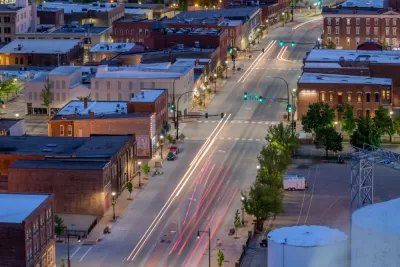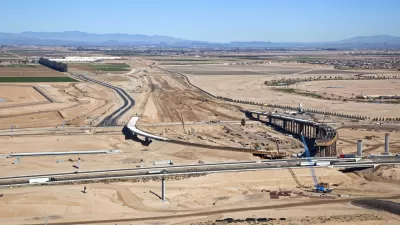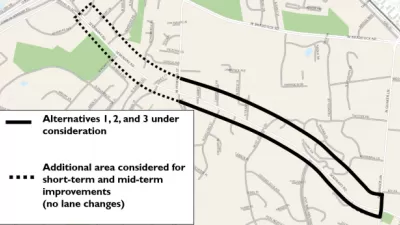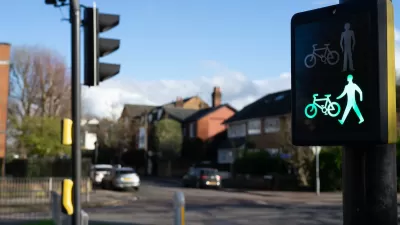The Federal Highway Administration (FHWA) released a report to Congress this week that takes initial steps toward making complete streets the default model for funding and designing federally controlled roads.

The Federal Highway Administration (FHWA) on Wednesday published a new report that adopts complete streets as the default approach for funding and designing the majority of federally funded roadways in the United States, according to an FHWA press release.
The "Moving to a Complete Streets Design Model: A Report to Congress on Opportunities and Challenges" report focuses on non-access-controlled roadways—i.e., not freeways, but urban arterials and small town main streets.
The Complete Streets design model will address rising traffic fatalities by implementing designs that reduce speeds, "making it a key component of FHWA’s implementation of the U.S. Department of Transportation’s National Roadway Safety Strategy," according to the press release.
To achieve its goals, the FHWA's complete streets program will focus on five opportunity areas:
- Improved data collection and analysis.
- Rigorous safety assessment during development and design.
- Accelerated adoption of standards and guidance.
- Reinforcing safety as a top priority.
- Complete streets as a default approach.
As noted in the press release, the Infrastructure Investment and Jobs Act (IIJA) approved by Congress at the end of 2021 also includes new priorities on Complete Streets, including a requirement that states and metropolitan planning organizations use at least 2.5 percent of their planning funding on activities related to Complete Streets or travel on foot, by bike, in a vehicle or using public transit. The IIJA "also continues to provide funding for Complete Streets activities through Rebuilding American Infrastructure with Sustainability and Equity (RAISE) grants and the National Highway Performance Program," adds the press release. "Surface Transportation Block Grant Program funds can also be used for Complete Streets implementation," and the FHWA also recently released guidance for the Highway Safety Improvement Program, which can be used for Complete Streets projects and received an additional $4 billion in funding, as documented by Planetizen in an article from November 2021.

Study: Maui’s Plan to Convert Vacation Rentals to Long-Term Housing Could Cause Nearly $1 Billion Economic Loss
The plan would reduce visitor accommodation by 25,% resulting in 1,900 jobs lost.

North Texas Transit Leaders Tout Benefits of TOD for Growing Region
At a summit focused on transit-oriented development, policymakers discussed how North Texas’ expanded light rail system can serve as a tool for economic growth.

Why Should We Subsidize Public Transportation?
Many public transit agencies face financial stress due to rising costs, declining fare revenue, and declining subsidies. Transit advocates must provide a strong business case for increasing public transit funding.

How to Make US Trains Faster
Changes to boarding platforms and a switch to electric trains could improve U.S. passenger rail service without the added cost of high-speed rail.

Columbia’s Revitalized ‘Loop’ Is a Hub for Local Entrepreneurs
A focus on small businesses is helping a commercial corridor in Columbia, Missouri thrive.

Invasive Insect Threatens Minnesota’s Ash Forests
The Emerald Ash Borer is a rapidly spreading invasive pest threatening Minnesota’s ash trees, and homeowners are encouraged to plant diverse replacement species, avoid moving ash firewood, and monitor for signs of infestation.
Urban Design for Planners 1: Software Tools
This six-course series explores essential urban design concepts using open source software and equips planners with the tools they need to participate fully in the urban design process.
Planning for Universal Design
Learn the tools for implementing Universal Design in planning regulations.
City of Santa Clarita
Ascent Environmental
Institute for Housing and Urban Development Studies (IHS)
City of Grandview
Harvard GSD Executive Education
Toledo-Lucas County Plan Commissions
Salt Lake City
NYU Wagner Graduate School of Public Service





























